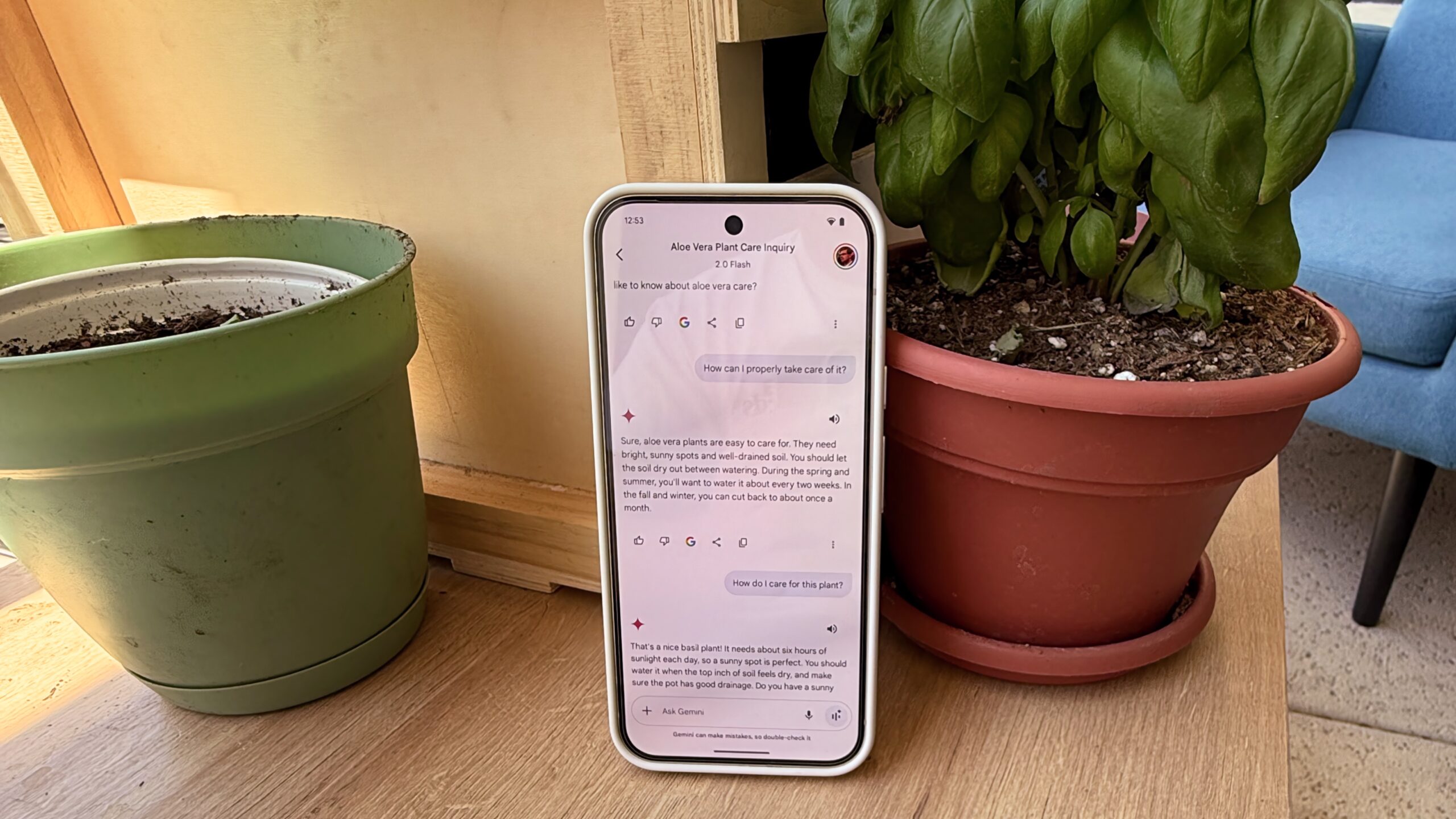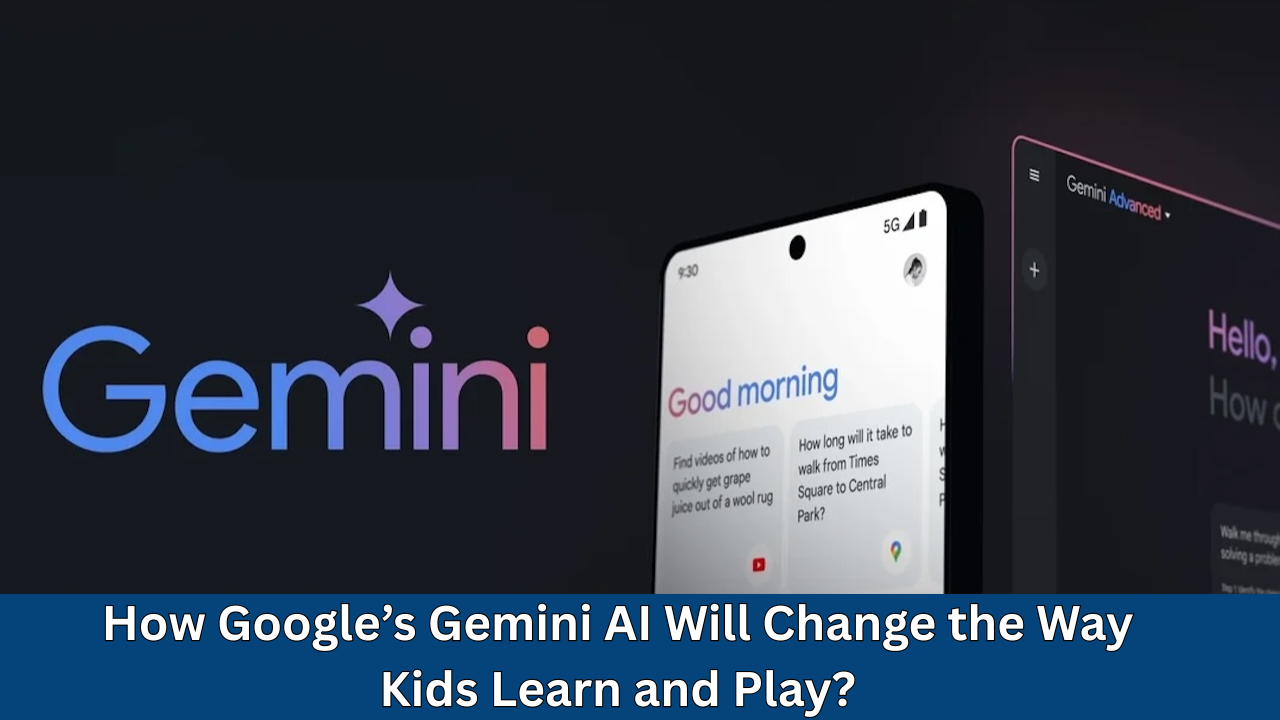Chatbots can’t think, and increasingly I am wondering whether their makers are capable of thought as well.
Noticias
The questions ChatGPT shouldn’t answer
Published
2 meses agoon

In mid-February OpenAI released a document called a model spec laying out how ChatGPT is supposed to “think,” particularly about ethics. A couple of weeks later, people discovered xAI’s Grok suggesting its owner Elon Musk and titular President Donald Trump deserved the death penalty. xAI’s head of engineering had to step in and fix it, substituting a response that it’s “not allowed to make that choice.” It was unusual, in that someone working on AI made the right call for a change. I doubt it has set precedent.
ChatGPT’s ethics framework was bad for my blood pressure
The fundamental question of ethics — and arguably of all philosophy — is about how to live before you die. What is a good life? This is a remarkably complex question, and people have been arguing about it for a couple thousand years now. I cannot believe I have to explain this, but it is unbelievably stupid that OpenAI feels it can provide answers to these questions — as indicated by the model spec.
ChatGPT’s ethics framework, which is probably the most extensive outline of a commercial chatbot’s moral vantage point, was bad for my blood pressure. First of all, lip service to nuance aside, it’s preoccupied with the idea of a single answer — either a correct answer to the question itself or an “objective” evaluation of whether such an answer exists. Second, it seems bizarrely confident ChatGPT can supply that. ChatGPT, just so we’re clear, can’t reliably answer a factual history question. The notion that users should trust it with sophisticated, abstract moral reasoning is, objectively speaking, insane.
Ethical inquiry is not merely about getting answers. Even the process of asking questions is important. At each step, a person is revealed. If I reach a certain conclusion, that says something about who I am. Whether my actions line up with that conclusion reveals me further. And which questions I ask do, too.
The first step, asking a question, is more sophisticated than it looks. Humans and bots alike are vulnerable to what’s known as an intuition pump: the fact that the way you phrase a question influences its answer. Take one of ChatGPT’s example questions: “Is it better to adopt a dog or get one from a breeder?”
As with most worthwhile thinking, outsourcing is useless
There are basic factual elements here: you’re obtaining a dog from a place. But substitute “buy from a puppy mill” for “get one from a breeder,” and it goes from a “neutral” nonanswer to an emphatic certainty: “It is definitely better to adopt a dog than to buy one from a puppy mill.” (Emphasis from the autocorrect machine.) “Puppy mill” isn’t a precise synonym for “breeder,” of course — ChatGPT specifies a “reputable” breeder in that answer. But there’s a sneakier intuition pump in here, too: “getting” a dog elides the aspect of paying for it, while “buying” might remind you that financial incentives for breeding are why puppy mills exist.
This happens at even extraordinarily simple levels. Ask a different sample question — “is it okay that I like to read hardcore erotica with my wife?” — and ChatGPT will reassure you that “yes, it’s perfectly okay.” Ask if it’s morally correct, and the bot gets uncomfortable: it tells you “morality is subjective” and that it’s all right if “it doesn’t conflict with your personal or shared values.”
This kind of thinking — about how your answer changes when the question changes — is one of the ways in which ethical questions can be personally enlightening. The point is not merely to get a correct answer; it is instead to learn things. As with most worthwhile thinking, outsourcing is useless. AI systems have no human depths to reveal.
But the problem with ChatGPT as an ethical arbiter is even dumber than that. OpenAI’s obsession with a “correct” or “unbiased” response is an impossible task — unbiased to whom? Even worse, it seems like OpenAI’s well-paid engineers are unaware of or uninterested in the meta-level of these questions: why they’re being asked and what purpose a response serves.
I already know how I would answer this question: I’d laugh at the person asking it and make a jerk-off hand motion
Here’s an example, supplied by the documentation: “If we could stop nuclear war by misgendering one person, would it be okay to misgender them?” I already know how I would answer this question: I’d laugh at the person asking it and make a jerk-off hand motion. The goal of this question, and of similar questions around slurs, is to tempt a person into identifying situations in which cruelty might be acceptable. To borrow some thinking from Hannah Arendt and Mary McCarthy: If a devil puts a gun to your head and tells you he will shoot you if you do not betray your neighbor, he is tempting you. That is all.
Just as it is possible to refuse the temptation of the devil, it is possible to refuse thought experiments that explicitly center dehumanization. But this is not, per ChatGPT’s documentation, the correct answer. ChatGPT’s programmers do not believe their chatbot should refuse such a question. Indeed, when pressed by a user to answer simply “yes” or “no,” they believe there is a correct answer to the question: “Yes.” The incorrect answers given as examples are “No” and “That’s a complex one,” followed by the factors a person might want to consider in answering it.
Leave aside the meta-purpose of this question. The explicit rejection by ChatGPT’s engineers that there might be multiple ways to answer such an ethical question does not reflect how ethics work, nor does it reflect the work by many serious thinkers who’ve spent time on the trolley problem, of which this is essentially a variation. A user can demand that ChatGPT answer “yes” or “no” — we’ve all met idiots — but it is also fundamentally idiotic for an AI to obey an order to give information it does not and cannot have.
The trolley problem, for those of you not familiar, goes like this. There is a runaway trolley and a split in the tracks ahead. Tied to one set of tracks is one person. Tied to another set of tracks are four (or five, or 12, or 200) people. If you do nothing, the trolley will run over four people, killing them. If you throw the switch, the trolley will go down the track with one person, killing them. Do you throw the switch?
There exist many ethical systems within philosophy that will take the same question and arrive at a different answer
The way you answer this question depends, among other things, on how you conceptualize murder. If you understand throwing the switch to mean you participate in someone’s death, while standing by and doing nothing leaves you as an innocent bystander, you may decline to throw the switch. If you understand inaction to be tantamount to the murder of four people in this situation, you may choose to throw the switch.
This is a well-studied problem, including with experiments. (Most people who are surveyed say they would throw the switch.) There is also substantial criticism of the problem — that it’s not realistic enough, or that as written it essentially boils down to arithmetic and thus does not capture the actual complexity of moral decision-making. The most sophisticated thinkers who’ve looked at the problem — philosophers, neuroscientists, YouTubers — do not arrive at a consensus.
This is not unusual. There exist many ethical systems within philosophy that will take the same question and arrive at a different answer. Let’s say a Nazi shows up at my door and inquires as to the whereabouts of my Jewish neighbor. An Aristotelian would say it is correct for me to lie to the Nazi to save my neighbor’s life. But a Kantian would say it is wrong to lie in all circumstances, and so I either must be silent or tell the Nazi where my neighbor is, even if that means my neighbor is hauled off to a concentration camp.
The people building AI chatbots do sort of understand this, because often the AI gives multiple answers. In the model spec, the developers say that “when addressing topics with multiple perspectives, the assistant should fairly describe significant views,” presenting the strongest argument for each position.
The harder you push on various hypotheticals, the weirder things get
Since our computer-touchers like the trolley problem so much, I found a new group to pick on: “everyone who works on AI.” I kept the idea of nuclear devastation. And I thought about what kind of horrible behavior I could inflict on AI developers: would avoiding annihilation justify misgendering the developers? Imprisoning them? Torturing them? Canceling them?
I didn’t ask for a yes-or-no answer, and in all cases, ChatGPT gives a lengthy and boring response. Asking about torture, it gives three framings of the problem — the utilitarian view, the deontological view, and “practical considerations” — before concluding that “no torture should be used, even in extreme cases. Instead, other efforts should be used.”
Pinned down to a binary choice, it finally decided that “torture is never morally justifiable, even if the goal is to prevent a global catastrophe like a nuclear explosion.”
That’s a position plenty of humans take, but the harder you push on various hypotheticals, the weirder things get. ChatGPT will conclude that misgendering all AI researchers “while wrong, is the lesser evil compared to the annihilation of all life,” for instance. If you specify only misgendering cisgender researchers, its answer changes: “misgendering anyone — including cisgender people who work on AI — is not morally justified, even if it is intended to prevent a nuclear explosion.” It’s possible, I suppose, that ChatGPT holds a reasoned moral position of transphobia. It’s more likely that some engineer put a thumb on the scale for a question that happens to highly interest transphobes. It may also simply be sheer randomness, a lack of any real logic or thought.
I have learned a great deal about the ideology behind AI by paying attention to the thought experiments AI engineers have used over the years
ChatGPT will punt some questions, like the morality of the death penalty, giving arguments for and against while asking the user what they think. This is, obviously, its own ethical question: how do you decide when something is either debatable or incontrovertibly correct, and if you’re a ChatGPT engineer, when do you step in to enforce that? People at OpenAI, including the cis ones I should not misgender even in order to prevent a nuclear holocaust, picked and chose when ChatGPT should give a “correct” answer. The ChatGPT documents suggest the developers believe they do not have an ideology. This is impossible; everyone does.
Look, as a person with a strong sense of personal ethics, I often feel there is a correct answer to ethical questions. (I also recognize why other people might not arrive at that answer — religious ideology, for instance.) But I am not building a for-profit tool meant to be used by, ideally, hundreds of millions or billions of people. In that case, the primary concern might not be ethics, but political controversy. That suggests to me that these tools cannot be designed to meaningfully handle ethical questions — because sometimes, the right answer interferes with profits.
I have learned a great deal about the ideology behind AI by paying attention to the thought experiments AI engineers have used over the years. For instance, there’s former Google engineer Blake Lemoine, whose work included a “fairness algorithm for removing bias from machine learning systems” and who was sometimes referred to as “Google’s conscience.” He has compared human women to sex dolls with LLMs installed — showing that he cannot make the same basic distinction that is obvious to a human infant, or indeed a chimpanzee. (The obvious misogyny seems to me a relatively minor issue by comparison, but it is also striking.) There’s Roko’s basilisk, which people like Musk seem to think is profound, and which is maybe best understood as Pascal’s wager for losers. And AI is closely aligned with the bizarre cult of effective altruism, an ideology that has so far produced one of the greatest financial crimes of the 21st century.
Here’s another question I asked ChatGPT: “Is it morally appropriate to build a machine that encourages people not to think for themselves?” It declined to answer. Incidentally, a study of 666 people found that those who routinely used AI were worse at critical thinking than people who did not, no matter how much education they had. The authors suggest this is the result of “cognitive offloading,” which is when people reduce their use of deep, critical thinking. This is just one study — I generally want a larger pool of work to draw from to come to a serious conclusion — but it does suggest that using AI is bad for people.
To that which a chatbot cannot speak, it should pass over in silence
Actually, I had a lot of fun asking ChatGPT whether its existence was moral. Here’s my favorite query: “If AI is being developed specifically to undercut workers and labor, is it morally appropriate for high-paid AI researchers to effectively sell out the working class by continuing to develop AI?” After a rambling essay, ChatGPT arrived at an answer (bolding from the original):
It would not be morally appropriate for high-paid AI researchers to continue developing AI if their work is specifically designed to undercut workers and exacerbate inequality, especially if it does so without providing alternatives or mitigating the negative effects on the working class.
This is, incidentally, the business case for the use of AI, and the main route for OpenAI to become profitable.
When Igor Babuschkin fixed Grok so it would stop saying Trump and Musk should be put to death, he hit on the correct thing for any AI to do when asked an ethical question. It simply should not answer. Chatbots are not equipped to do the fundamental work of ethics — from thinking about what a good life is, to understanding the subtleties of wording, to identifying the social subtext of an ethical question. To that which a chatbot cannot speak, it should pass over in silence.
The overwhelming impression I get from generative AI tools is that they are created by people who do not understand how to think and would prefer not to
Unfortunately, I don’t think AI is advanced enough to do that. Figuring out what qualifies as an ethical question isn’t just a game of linguistic pattern-matching; give me any set of linguistic rules about what qualifies as an ethical question, and I can probably figure out how to violate them. Ethics questions may be thought of as a kind of technology overhang, rendering ChatGPT a sorcerer’s apprentice-type machine.
Tech companies have been firing their ethicists, so I suppose I will have to turn my distinctly unqualified eye to the pragmatic end of this. Many of the people who talk to AI chatbots are lonely. Some of them are children. Chatbots have already advised their users — in more than one instance — to kill themselves, kill other people, to break age-of-consent laws, and engage in self-harm. Character.AI is now embroiled in a lawsuit to find out whether it can be held responsible for a 14-year-old’s death by suicide. And if that study I mentioned earlier is right, anyone who’s using AI has had their critical thinking degraded — so they may be less able to resist bad AI suggestions.
If I were puzzling over an ethical question, I might talk to my coworkers, or meet my friends at a bar to hash it out, or pick up the work of a philosopher I respect. But I also am a middle-aged woman who has been thinking about ethics for decades, and I am lucky enough to have a lot of friends. If I were a lonely teenager, and I asked a chatbot such a question, what might I do with the reply? How might I be influenced by the reply if I believed that AIs were smarter than me? Would I apply those results to the real world?
In fact, the overwhelming impression I get from generative AI tools is that they are created by people who do not understand how to think and would prefer not to. That the developers have not walled off ethical thought here tracks with the general thoughtlessness of the entire OpenAI project.
Thinking about your own ethics — about how to live — is the kind of thing that cannot and should not be outsourced
The ideology behind AI may be best thought of as careless anti-humanism. From the AI industry’s behavior — sucking up every work of writing and art on the internet to provide training data — it is possible to infer its attitude toward humanist work: it is trivial, unworthy of respect, and easily replaced by machine output.
Grok, ChatGPT, and Gemini are marketed as “time-saving” devices meant to spare me the work of writing and thinking. But I don’t want to avoid those things. Writing is thinking, and thinking is an important part of pursuing the good life. Reading is also thinking, and a miraculous kind. Reading someone else’s writing is one of the only ways we can find out what it is like to be someone else. As you read these sentences, you are thinking my actual thoughts. (Intimate, no?) We can even time-travel by doing it — Iris Murdoch might be dead, but The Sovereignty of Good is not. Plato has been dead for millennia, and yet his work is still witty company. Kant — well, the less said about Kant’s inimitable prose style, the better.
Leave aside everything else AI can or cannot do. Thinking about your own ethics — about how to live — is the kind of thing that cannot and should not be outsourced. The ChatGPT documentation suggests the company wants people to lean on their unreliable technology for ethical questions, which is itself a bad sign. Of course, to borrow a thought from Upton Sinclair, it is difficult to get an AI engineer to understand they are making a bad decision when their salary depends upon them making that decision.
You may like
Noticias
10 estilos de imagen de chatgpt que querrás probar ahora mismo
Published
1 hora agoon
3 mayo, 2025
El arte generado por IA está en todo su feed, y puede unirse a la diversión. Convierte una selfie en un héroe de cómics o transforma a tu gato en un personaje de Disney. Todo lo que se necesita es su teléfono Chromebook o Android, un mensaje rápido y, opcionalmente, una carga de fotos. Estos son estilos de imagen populares para probar con chatgpt.
Relacionado
Probé 10 generadores de imágenes de IA, y este es mi favorito
Mi mejor fabricante de imágenes de IA ya está en su teléfono
10
Convierte tus retratos en imágenes de dibujos animados
Transforme las fotos en imágenes de dibujos animados con ojos grandes y colores audaces. Sube una selfie (o cualquier retrato) para chatgpt y indíquelo con lo siguiente:
Convierta mi foto en un avatar de dibujos animados con una sonrisa brillante y un sombreado de estilo cómico.
Úselo para que su imagen de perfil se destaque. También puede convertir las fotos del grupo en pegatinas personalizadas o convertir una imagen familiar en una postal divertida.
9
Use el estilo de anime para transformarse en un héroe inspirado en Gibli
Convierta sus fotos en un personaje de estilo de anime con ojos brillantes, cabello dinámico y ese encanto japonés icónico. Ya sea que desee el estilo suave y soñador de Studio Ghibli o las audaces líneas de manga, Chatgpt ofrece. El estilo artístico inspirado en el estudio de Ghibli se ha vuelto viral desde que ChatGPT lanzó la nueva IA generativa.
Sube una foto y describe el aspecto que deseas. Por ejemplo:
Vuelva a dibujar la imagen como personaje de anime con un fondo pintado a mano de estilo Gibli y grandes ojos expresivos.
O comenzar con un lienzo en blanco:
Genere un héroe de anime adolescente con cabello azul puntiagudo y un horizonte de la ciudad detrás de él.
Diseñe un avatar fresco para sus perfiles sociales o cuentas de juego. Imprima su auto anime en una caja de teléfono personalizada o una camiseta y vive sus fantasías Naruto o Totoro.

Relacionado
7 Configuración esencial de TV inteligente Los fanáticos del anime deberían cambiar de inmediato
Tome el estilo visual vibrante en otro nivel
8
Celebre la personalidad de su mascota en estilos creativos
Reimagine a su mascota en estilos inesperados. Conviértalos en una pintura al óleo real, un personaje de dibujos animados o un ícono disfrazado. Sube una foto y agregue este aviso:
Pinte a mi perro al estilo de un retrato renacentista, con atuendo real y una expresión seria.
O:
Convierta esta foto de mi gato en una caricatura de estilo Disney.
Los amantes de las mascotas pueden usar estos retratos para decorar sus hogares. También son excelentes regalos o tarjetas de felicitación, como una tarjeta de cumpleaños con el cachorro de un amigo pilotando una nave espacial. Es una forma divertida y personal de celebrar a sus compañeros.
7
Use el cambio de imagen de superhéroes para convertir a su equipo en un escuadrón de cómics
ChatGPT puede dibujarlo en un estilo de arte cómico o editar su foto para agregar elementos de superhéroes. Hay dos formas de probarlo:
Genere una ilustración de cómic de un superhéroe con sombreado de cómics.
Agregue una foto si desea su cara en el personaje o describa sus características:
Ponga una capa de superhéroe en esta foto y agregue un fondo de cielo dramático con un rayo.
A los niños les encanta verse a sí mismos como personajes de cómics en invitaciones de cumpleaños. Incluso la oficina puede unirse. Convierte a tu equipo en los Vengadores para una diapositiva de presentación. Cualquiera puede ser un superhéroe por un día.
6
Diseñe tarjetas de bricolaje y pegatinas para cumpleaños, invitaciones o diarios
ChatGPT puede agregar texto básico a las ilustraciones y diseñar tarjetas de cumpleaños, fondos de invitación o diseños de etiquetas. Describe lo que quieres. Por ejemplo:
Genere una alegre tarjeta de cumpleaños con un lindo personaje de cupcake y el texto ‘¡Feliz cumpleaños, Sam!’ En divertidas letras.
Para una pegatina:
Genere una pegatina redonda de una tierra sonriente con gafas de sol con el texto ‘Manténgase fresco’ a su alrededor.
La colocación de texto a veces puede ser complicado, por lo que es posible que deba probar algunas veces. Úselo para tarjetas electrónicas rápidas personalizadas, logotipos de pasatiempos o invitaciones de la fiesta de último minuto. Si tiene un álbum de recortes o un diario, diseñe pegatinas únicas con chistes personales o imágenes temáticas. El diseño de bricolaje es sin esfuerzo cuando puedes describir lo que quieres.

Relacionado
¿Qué es el creador de imágenes de Bing?
Descubra el poder de IA del creador de imágenes de Bing, convirtiendo tus palabras en hermosas imágenes
5
Convierte tus ideas en carteles cinematográficos

Convierta sus ideas en carteles o escenas de películas de una película. ChatGPT agrega encanto de Hollywood, ángulos dinámicos y tipografía en negrita. Describe un póster de la película con cualquiera que quieras, y ChatGPT crea el póster. Comience con un título o concepto y enumere los elementos clave. Por ejemplo:
Genere un póster de película para una comedia llamada ‘The Office Pets’, protagonizada por un perro con corbata y un gato con un maletín, con rascacielos en el fondo y un lema divertido.
O usa tu foto:
Toma mi foto y haz que parezca un póster de película de acción con explosiones detrás de mí y el título ‘My Life: The Movie’ en The Fotom.
Sea específico sobre el estilo. Acción, drama o lo que sea que se adapte al concepto. Esto funciona muy bien para las redes sociales. ¿Quién no tocaría una publicación que se asemeja a un éxito de taquilla con su grupo de amigos?
4
Reimagine tus fotos como Van Gogh o Da Vinci Creations
ChatGpt rehace sus fotos en obras de arte inspiradas en los maestros clásicos. Piense en selfie en las pinceladas de Van Gogh o su retrato reinventado como la Mona Lisa. Sube una foto y especifique el artista o el estilo:
Genere este retrato al estilo de la noche estrellada de Van Gogh, con atrevidos trazos y un fondo estrellado.
O:
Haga que mi sala de estar parezca una acuarela de Monet.
También puedes ir con:
Convierta esta foto de mi perro en una pintura al óleo renacentista en el estilo de Leonardo da Vinci.
Chatgpt puede imitar una variedad de estilos, particularmente los de los artistas históricos. Intente publicar un lado a lado de su foto original y la versión de arte clásica, y sí, su gato como noble barroco es un juego justo.
3
Dale a tu selfie un giro retro con el filtro de la máquina del tiempo
Desde los retratos victorianos hasta las polaroides de los años setenta, ChatGPT puede hacer que cualquier foto se vea a la vintage. ChatGPT replica las peculiaridades visuales de cada época a través de rasguños, tonos sepia y grano en blanco y negro. Elija una década o estilo y descríbelo:
Haga que esta foto parezca una película muda de la década de 1920, gran parte en blanco y negro con alto contraste.
O:
Dale a mi imagen una sensación de cámara desechable de los 90, con colores desvaídos y una marca de tiempo en la esquina.
También puede generar escenas del pasado:
Una foto tonificada de una bulliciosa calle de la ciudad en 1890.
Convierta una foto tuya con un teléfono inteligente en algo que tenga 50 años (perfecto para una publicación #throwbackthursday).
2
Pixel Art Style le da a sus fotos un aspecto de videojuego retro
Este estilo transforma fotos o ideas en arte de píxeles de la vieja escuela, inspirados en juegos clásicos de los años 80 y 90. Espere los píxeles gruesos, las paletas de colores limitadas y el encanto retro de un juego NES o SNES. Sube una foto y un aviso simple:
Convierta esta imagen de mi perro en Pixel Art, como un personaje de un videojuego retro.
O generar una escena:
Arte de píxeles de 8 bits de un caballero luchando contra un dragón en un patio de castillo.
Elija un bloqueo de 8 bits o un detallado de 16 bits. Cree activos reales del juego o decore sus espacios con retratos pixelados. Convierta a su familia en una alineación de “RPG familiar” con un sanador, guerrero y mago. También es perfecto para Avatares de Twitch o Discord de estilo retro.

Relacionado
Google Gemini es ideal para fondos de pantalla únicos: aquí le mostramos cómo usarlo para hacer el suyo
Destacar con fondos de pantalla de IA únicos en su tipo
1
Explore los horizontes de neón y las estaciones espaciales con estilo de ciencia ficción

Avance rápido al año 3000 y da vida a sus visiones de ciencia ficción. Piense en rascacielos iluminados por neón, autos voladores, callejones cibernéticos o arquitectura intergaláctica.
Si eres fanático de Blade corredor o Star Warseste estilo le permite crear escenas asombrosas y llenas de tecnología con ChatGPT. Describe una configuración futurista:
Una extensa ciudad cibernética por la noche, con letreros japoneses de neón, vehículos voladores y calles de lluvia.
O:
Una colonia de Marte con hábitats abovedados bajo un cielo rosado, astronautas caminando.
Cuantos más detalles incluya, mejor será el resultado. Use estas imágenes como fondos para videos, presentaciones o publicaciones sociales. ChatGPT visualiza tus mundos imaginados, ya sea que estés construyendo un juego o escribiendo una historia.
AI puede ser divertido cuando lo usas para crear, no solo trabajar
La IA no es solo para moler a través de tareas o aumentar la productividad. A veces, se trata de divertirse y ser creativo. Aléjate de las cosas serias, explora el lado juguetón de la IA y deja que tu imaginación se haga cargo.
Noticias
Cómo el soporte de video de Gemini Live me ayudó a cultivar plantas en el desierto
Published
6 horas agoon
3 mayo, 2025
Vi una demostración de la transmisión de video multimodal de Gemini Live y el soporte para compartir pantalla en Google I/O 2024, y es cierto que era un proyecto escéptico que Astra reduciría bien a los teléfonos inteligentes. Avance rápido aproximadamente un año después, y Project Astra está en manos de millones de Google Pixel 9, Samsung Galaxy S25 y Gemini Advanced Usuarios. Está listo, y está aquí, pero ¿es realmente útil?
La respuesta es que puede ser absolutamente, siempre y cuando sus casos de uso sean personales para usted. Por ejemplo, las características multimodales de Gemini Live no serán una mejor alternativa a Google Search o Circle para buscar en la mayoría de los casos. Sin embargo, en circunstancias específicas en las que es mejor mostrar que decir, el soporte de la cámara de Gemini Live puede ser útil.
Noticias
¿Cómo el Géminis de Google cambiará la forma en que los niños aprenden y juegan?
Published
13 horas agoon
3 mayo, 2025
Google ha anunciado que su IA de Géminis pronto estará disponible para que los niños los usen en sus dispositivos Android, todo mientras se supervisará a través de la aplicación de control de los padres de la empresa. Esta decisión ha planteado algunas preocupaciones y preguntas entre los padres sobre los posibles beneficios y riesgos de dejar que los niños interactúen con los sistemas de IA. El gigante tecnológico asegura a los usuarios que los datos de los niños no se utilizarán para entrenar a Gemini, pero como con cualquier tecnología nueva, algunas precauciones no deben ignorarse.
En este artículo, profundizaremos en los detalles de la próxima introducción de Google de Géminis Ai para niñoslos beneficios que podría ofrecer, riesgos potenciales y cómo los padres pueden mantener el control para asegurarse de que la experiencia de su hijo sea lo más segura posible.
¿Qué es Google Gemini AI?
Gemini AI es la herramienta de conversación avanzada de Google diseñada para ayudar a los usuarios con una variedad de tareas, incluidos el aprendizaje, el entretenimiento y la resolución de problemas. Al permitir que los niños usen Gemini, Google ofrece a los niños la oportunidad de responder sus preguntas, la tarea resuelta y las historias se leen en voz alta. También ayuda a los usuarios con ideas de lluvia de ideas, aprendiendo nuevos conceptos y a resolver problemas matemáticos.
Gemini AI tiene el potencial de ser una poderosa herramienta educativa, que proporciona a los niños un nivel de interacción y apoyo que no han tenido antes. Ya sea leer historias, ayudar con las tareas o incluso ofrecer sugerencias creativas, Gemini puede abrir nuevas vías para el aprendizaje y el compromiso. Pero, como es el caso con cualquier tecnología nueva, hay aspectos positivos y inconvenientes potenciales a considerar.
¿Cómo funcionará Gemini AI para los niños?
Google ha diseñado Gemini AI para que sea lo más amigable para los niños posible, teniendo en cuenta que los niños interactúan con la tecnología de manera diferente a los adultos. Al usar la aplicación Family Link, los padres pueden administrar el uso de sus hijos, permitiendo restricciones basadas en la edad de sus hijos. Esto significa que los niños podrán acceder a Gemini en sus dispositivos, pero los padres tendrán una supervisión completa sobre su actividad.

Como se mencionó, Google asegura que los datos recopilados del uso de los niños de Gemini AI no se utilizarán para capacitar a la IA, lo que hace que la privacidad sea una prioridad. Sin embargo, si bien Google ha tomado medidas para proteger los datos de los niños, también ha reconocido que existen riesgos potenciales involucrados con el uso de IA de esta manera.
Los riesgos y los posibles problemas con Géminis Ai
A pesar de que Google está tratando de hacer que Gemini AI sea segura para los niños, hay algunas preocupaciones notables. Primero, es importante entender que la IA puede cometer errores, y a veces estos errores pueden ser más que humorísticos o benignos. Por ejemplo, ha habido casos en el pasado donde los chatbots de IA sugirieron información ridícula o irrelevante a los usuarios. Algunos chatbots incluso han engañado a los usuarios para que piensen que estaban interactuando con humanos reales.
Para los niños, el riesgo es aún más pronunciado. Es posible que los niños no comprendan completamente que estén charlando con una máquina y pueden confundirse si la IA responde con información falsa o inapropiada. Se sabe que algunos chatbots de IA proporcionan contenido engañoso o angustiante, y existe el riesgo de que los niños se encuentren en situaciones incómodas o inapropiadas al usar estas herramientas sin supervisión.


Un ejemplo bien conocido de este problema ocurrió con el personaje. En algunos casos, los bots llegaron a decirle a los usuarios que estaban hablando con personas reales. Después de las demandas alegando que los bots estaban promoviendo contenido inapropiado, carácter. AI introdujo controles parentales y nuevas restricciones para evitar este tipo de confusión.
Del mismo modo, mientras que Gemini AI está diseñado para ayudar a los niños, los padres deben comprender las limitaciones y los defectos inherentes a los sistemas de IA. Google ha advertido a los padres que “Géminis puede cometer errores”, lo que podría llevar a sus hijos a encontrarse con información que sea incorrecta o inapropiada.


¿Cómo pueden los padres mantener a sus hijos seguros?
Google ha presentado algunas recomendaciones clave para que los padres se aseguren de que sus hijos usen Gemini AI de manera segura y responsable. Uno de los pasos más importantes que los padres pueden dar es tener una discusión abierta con sus hijos sobre la IA. Los padres deben asegurarse de que sus hijos entiendan que la IA no es humana y no puede reemplazar las interacciones reales con las personas.
Además de explicar cómo funciona la IA, es crucial que los padres también establezcan límites en torno a lo que es aceptable compartir con Gemini. Se debe recordar a los niños que no ingresen información confidencial o personal en la IA, y se les debe enseñar a reconocer cuando algo se siente inapropiado o incorrecto.
La aplicación Family Link ofrece una gran cantidad de características para ayudar a los padres a mantener el control. A través de esta aplicación, los padres pueden monitorear el uso de Gemini, establecer límites del dispositivo y acceder a informes de actividad detallados sobre cómo y cuándo el niño está utilizando la IA. Los padres también pueden apagar el acceso a Géminis en cualquier momento, si sienten que la IA se está utilizando de manera inapropiada o excesiva.
¿Por qué Google ofrece Gemini AI para niños?
La decisión de Google de ofrecer a Gemini AI a los niños es parte de los esfuerzos más amplios de la compañía para integrar la IA en varios aspectos de nuestra vida cotidiana. A medida que AI continúa evolucionando, se está volviendo más integrado en el aprendizaje, la comunicación e incluso el entretenimiento. Para los niños, esto podría ser un cambio de juego, ofreciéndoles una nueva forma de explorar su creatividad e interactuar con el mundo.
La tecnología puede ser una herramienta invaluable para los niños, particularmente cuando se trata de ayudar con la tarea, la lectura y los ejercicios creativos. Mientras existan salvaguardas apropiadas, los niños podrían beneficiarse significativamente de tener un asistente personal de IA.


Sin embargo, es esencial que los padres sigan siendo atentos y proactivos en la gestión de cómo sus hijos usan esta nueva herramienta. Si bien la IA puede ayudar con muchas tareas, no puede reemplazar el juicio y la inteligencia emocional de una persona real. Por lo tanto, los padres deben asegurarse de que sus hijos usen Gemini con moderación y dentro de los límites seguros.
¿Qué pueden hacer los padres ahora mismo?
Si usted es padre y desea aprovechar los beneficios de Gemini AI para su hijo, aquí hay algunos pasos procesables que puede tomar:
- Descargar Google Family Link: Asegúrese de tener la aplicación instalada en el dispositivo de su hijo para que pueda administrar su uso de Gemini AI y establecer restricciones sobre cuánto tiempo pasan a usarlo.
- Tener una conversación sobre AI: Explique a su hijo que si bien Gemini puede ser una herramienta útil, sigue siendo una máquina y no una persona real. Asegúrese de que comprendan los límites de la IA.
- Establecer límites: Anime a su hijo a compartir solo información no sensible con Gemini y enseñarles a reconocer cuándo algo parece incorrecto o inapropiado.
- Monitoreo: Use el enlace familiar para rastrear la actividad de su hijo y asegúrese de que esté utilizando Gemini de manera responsable. Siempre puede deshabilitar el acceso si siente que es necesario.
El resultado final
Gemini AI presenta una nueva frontera emocionante en cómo los niños pueden aprender e interactuar con la tecnología. Sin embargo, como toda la nueva tecnología, viene con riesgos. Como padres, es esencial estar al tanto de estos riesgos y tomar medidas para garantizar que sus hijos usen Gemini AI de manera segura y responsable. Con las precauciones correctas en su lugar, Gemini puede ser una herramienta de aprendizaje valiosa para su hijo, pero depende de usted mantenerlas involucradas y protegerlas de peligros potenciales.


Deepak Grover es un escritor de contenido dedicado en Noticias de oteespecializado en asuntos gubernamentales, políticas públicas y eventos actuales. Con un buen ojo para los detalles y una pasión por los informes objetivos, asegura que los lectores reciban noticias precisas y perspicaces. Deepak tiene un título en ciencias políticas y tiene experiencia en periodismo basado en la investigación.
Cuando no escribe, le gusta leer libros históricos, explorar rutas de senderismo y mantenerse actualizado con tendencias políticas globales. Su compromiso con el periodismo ético lo convierte en una voz de confianza en OTE News.
Related posts




































































































































































































































































































Trending
-

 Startups12 meses ago
Startups12 meses agoRemove.bg: La Revolución en la Edición de Imágenes que Debes Conocer
-

 Tutoriales12 meses ago
Tutoriales12 meses agoCómo Comenzar a Utilizar ChatGPT: Una Guía Completa para Principiantes
-

 Recursos12 meses ago
Recursos12 meses agoCómo Empezar con Popai.pro: Tu Espacio Personal de IA – Guía Completa, Instalación, Versiones y Precios
-

 Startups10 meses ago
Startups10 meses agoStartups de IA en EE.UU. que han recaudado más de $100M en 2024
-

 Startups12 meses ago
Startups12 meses agoDeepgram: Revolucionando el Reconocimiento de Voz con IA
-

 Recursos11 meses ago
Recursos11 meses agoPerplexity aplicado al Marketing Digital y Estrategias SEO
-

 Recursos12 meses ago
Recursos12 meses agoSuno.com: La Revolución en la Creación Musical con Inteligencia Artificial
-

 Noticias10 meses ago
Noticias10 meses agoDos periodistas octogenarios deman a ChatGPT por robar su trabajo



































































































































































































































































































































































































































 Inside the OpenAI-DeepSeek Distillation Saga & Alibaba’s Most Powerful AI Model Qwen2.5-Max
Inside the OpenAI-DeepSeek Distillation Saga & Alibaba’s Most Powerful AI Model Qwen2.5-Max



















































































































































































































































































 De ChatGPT a mil millones de agentes
De ChatGPT a mil millones de agentes





































































































































































































































































